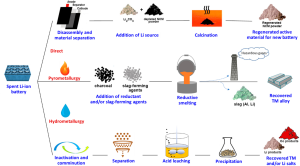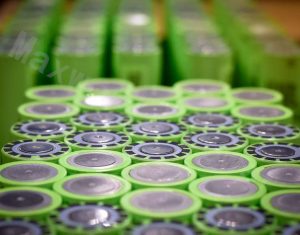Solar Lithium Batteries
Due to their decreased cost, solar lithium batteries are now a common choice for energy storage in solar power systems in addition to being used in mobile devices and electric vehicles. Between 1991 and 2005, the energy capacity per dollar decreased tenfold, from 0.3 Wh to 3 Wh.
What Are Solar Lithium Batteries?
Simply put, solar lithium batteries utilized in a solar power system are known as solar lithium batteries. In more detail, the majority of lithium solar batteries are deep-cycle LiFePO4 batteries, which are comparable to the widely used deep-cycle starting batteries for cars.
Lithium salts are used in LiFePO4 batteries to create a highly effective and durable battery. These batteries are perfect for solar applications with erratic charging and discharging because they are deep-cycle batteries.
Lithium batteries, Are thet good solar lithium batteries?
Smart batteries are those made of lithium. Because they feature a built-in battery management system, they are clever (BMS). The BMS controls crucial processes like temperature and charging to maintain the battery’s health.
Solar lithium batteries come in a variety of chemistries, but lithium iron phosphate (LifePo4) is the one that is most frequently used for solar. Lithium iron phosphate is safer, has a higher cycle count, and has a longer shelf life.Compared to other batteries, lithium batteries have a few more benefits.
There are a few qualities you should be aware of if you’re deciding which solar lithium batteries to purchase if you’re looking at lithium. These include cycle life, efficiency, energy density, and battery capacity.
Efficiency
95 percent of lithium is efficient. Efficiency determines how much of the battery’s stored energy may be used. If a lithium battery is getting 100 watts, you can use 95 watts.
A battery that is more effective charges more quickly. Whether your off-grid solar system runs in the winter or on overcast days, this is vital.
As a lead-acid battery is depleted, its voltage gradually drops. A lead-acid battery may typically only be used to roughly half its capacity before the voltage becomes insufficient to power your devices. When a lead-acid battery is depleted below 50% of its capacity, its lifespan is likewise reduced and it suffers damage.
Solar lithium batteries, on the other hand, continually produce power and voltage when being emptied all the way to empty. This shows that you can utilize the battery to its full potential without experiencing a significant voltage drop. Additionally, lithium batteries are unaffected by a full discharge, in contrast to lead-acid batteries.
Capacity
A battery’s capacity is its overall stored energy. The amount of energy that can be used (in relation to the battery’s overall capacity) is measured by the depth of discharge.
Lithium has an 80% depth of discharge (90 percent in emergencies). That means you can use 80Ah from a 100Ah battery.
The closest rival for lithium in solar systems is the lead-acid battery, which has a 50% depth of discharge.
Amp-hour rating
By examining a battery’s amp-hour rating, you may roughly estimate how many amps it can deliver for one hour (Ah). A 100 Ah battery, for example, has an output capability of 100 amps per hour, 50 amps per day, etc.
As the number rises, so does the battery’s ability to deliver electricity. To increase the capacity and amp-hours available, numerous batteries are connected in parallel to form a battery bank.
You should perform an energy evaluation prior to making a battery purchase to ascertain the required energy handling capacity of your battery bank. You’ll likely run out of power when you need it if your battery bank doesn’t have enough amp-hours.
Energy density
How much energy a battery can carry relative to its weight is its density. Energy density is high for lithium. In comparison to other solar lithium batteries like lead-acid, it has a higher cell voltage (3.6V), which contributes to this (2V).
Solar lithium batteries can be up to 50% smaller and up to three times lighter than lead-acid batteries thanks to their superior energy density. In addition, lithium is the lightest metal.
Because they are lighter and smaller, you have greater installation options. For instance, you may fit them into smaller spaces and install them on the wall.
If you’re eager to learn which type of solar lithium batteries are superior, here is a thorough comparison of lithium and lead-acid batteries.
Service life
Battery cycle life varies. One charge and discharge make up a cycle (through use). An average lithium battery has 5000 cycles. They can be recharged and discharged 5000 times.
Divide 5000 by 365 to calculate the answer in days. Solar lithium batteries can last up to 13 years as a result. Based on a single cycle each day and the depth of discharge, this is what is meant.
Other characteristics
The main performance aspects of solar lithium batteries are capacity, efficiency, density, and cycle life. Others are equally significant but not as crucial as the others. These include self-discharge, recycling, and battery upkeep.
Flexibility. You can combine batteries of various ages when using lithium.You can start with one battery this year and add more as needed. You now have the option to gradually construct your solar system.
Maintenance. Maintenance-free lithium batteries are available. In contrast to some lead-acid battery types that require maintenance, this makes it simpler to use.
Self-discharge. Even when they are not linked to a load, batteries still lose some energy. Since lithium batteries self-discharge at a low rate of 1.5-2 percent each month, you don’t need to be concerned if the battery isn’t used for several months.
Recycling. Lithium is considered a non-hazardous waste since it contains less harmful metals than other wastes. The spent iron, copper, nickel, and cobalt are thought to be safe for landfills and incinerators. When a lithium battery reaches the end of its useful life, this makes recycling it simpler.
Battery Management System. Your solar lithium batteries‘s integrated battery management system (BMS) aids in ensuring safe operation and a long service life. The BMS balances the charge across the cells and keeps an eye on the battery’s condition and temperature. In order to avoid harm, the BMS turns off the battery when it notices harmful conditions. Check the internal BMS of the lithium battery you chose.
Solar lithium batteries: The Pros and Cons
Obviously, looking from the outfit, solar lithium batteries are lighter and smaller that fits in tighter spaces.
A deeper depth of discharge.
It gives you more usable energy per charge. Additionally, faster charging. It is crucial in the winter and on cloudy days, when there is little solar energy available to charge the batteries.
10+ year lifespan.
When they see the price of solar lithium batteries, many turn away. But one of the most important things to consider is how long they last. Typically, lead-acid batteries last 200 to 900 charging cycles. With daily solar charging, this lasts for at most a few years in perfect circumstances with regular maintenance.
Solar lithium batteries, on the other hand, have a reputation for lasting 5000+ charge cycles, which equates to 10+ years of use. For instance, Maxworld power backs their batteries with a 5-year warranty and designed their batteries to withstand 3,000–5,000 cycles independent of the depth of drain. This ensures that after 5,000 discharge cycles, 80% of the battery will be usable!

No Problem for Inconsistent charging.
Depending on the season, location, and weather, there can be variations in the conditions for solar charging. A solar array can almost lose all of its value on gloomy days, and charging varies dramatically minute by minute. While it has no impact on lithium batteries, inconsistent charging can harm lead-acid batteries. You might use a different amount of power from your battery bank each day. When it comes to regulating erratic discharge cycles, lithium batteries perform remarkably well. Your lithium battery bank can withstand unpredictable discharging without endangering the batteries, regardless of whether it serves as your main power source or a backup power supply. High-quality lithium batteries can withstand deep discharges that would cause lead-acid cells harm with little to no ill effects.
Cons of solar lithium batteries
Expensive. The initial cost is up to 2-3 times higher than lead-acid.
When should lithium batteries be chosen?
Solar lithium batteries are the best solar batteries because of their distinct qualities. Lithium’s improved performance really stands up in several situations.
Off-Grid home or everyday use
Lithium provides greater energy for usage off the grid or continuously. Additional appliances can be handled by it. Lithium will function best if your energy requirements are large, as they would be in an off-grid home or business.
Our Outstanding Brand for Solar Lithium Batteries

Maxworld Power is a well-known brand in the lithium battery sector. Every day, thousands of solar lithium batteries are hard at work in several applications, ranging from bass boats to RVs. Our company manufactures a wide range of sizes and forms for use in a wide range of solar system applications.
No matter the depth of discharge, we build our batteries to last 3,000–5,000 cycles, and we stand by this with a 5-year warranty. Our unique BMS safeguards your battery in all circumstances and enables you to use it to its maximum potential without risking damage.
We also take great satisfaction in having one of the world’s top customer service teams. Please get in touch with us if you have any queries about developing your system or lithium batteries in general. Please get in touch with us. Your batteries will endure for many years if you invest in Maxworld power, and you can rest easy knowing that we’ll be there for you every step of the way.












